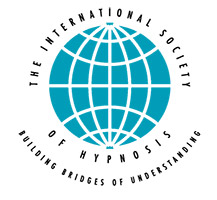
Borderline (Emotionally Unstable) Personality Disorder is a condition characterized by rapid mood shift, impulsivity, hostility and chaotic social relationships. People with borderline personality disorder usually go from one emotional crisis to another.
In the general population, rapid mood shift, impulsivity, and hostility are normal in childhood and early adolescence, but disappear with maturity. However, in Borderline Personality Disorder, rapid mood shift, impulsivity, and hostility intensifies in adolescence and persists into adulthood. In early adulthood, individuals with this disorder have highly changeable moods and intense anger. Fortunately, in their 30's and 40's, the majority develop emotional stability and adequate coping skills.
Borderline Personality Disorder is quite different from Bipolar I Disorder. The mood swings seen in Borderline Personality Disorder seldom last more than one day; whereas mood swings in Bipolar I Disorder last much longer. Borderline Personality Disorder doesn't exhibit the prolonged episodes of decreased need for sleep, hyperactivity, pressured speech, reckless over-involvement, and grandiosity that are characteristic of Bipolar I Disorder.
The core features of this disorder are:
This disorder is only diagnosed if:
Socially, individuals with this disorder often form "love-hate" relationships that alternate between extremes of idealization and devaluation. They may make frantic efforts to avoid real or imagined abandonment. Frequently they feel that their life is empty and lacking in meaning and purpose. Many don't know "who they are" (i.e., identity confusion) or "where they are going in life" (i.e., goal confusion).
Negative Emotion
- Emotions spiral out of control, leading to extremes of anxiety, sadness, rage
- Has extreme reactions to perceived slights or criticism
- Expresses emotion in exaggerated and theatrical ways.
- Emotions change rapidly and unpredictably.
- Feels unhappy, depressed, or despondent
Antagonism
- Intense anger,
- Often angry or hostile.
Disinhibition
- Need for stimulation/proneness to boredom
- Impulsivity
- Promiscuous sexual behavior
- Irresponsibility
Like all personality disorders, Borderline Personality Disorder is a deeply ingrained and enduring behavior pattern, manifesting as an inflexible response to a broad range of personal and social situations. This behavior represents an extreme or significant deviation from the way in which the average individual in a given culture relates to others. This behavior pattern tends to be stable. It causes significant distress/disability.
Warning: Self-diagnosis of this disorder is usually inaccurate.
Accurate diagnosis of this disorder requires assessment by a qualified practitioner trained in psychiatric diagnosis and evidence-based treatment.
Course
The course of Borderline Personality Disorder is quite variable. Borderline personality disorder is likely to remit (50% by 2 years, and 85% by 10 years), and once it remits, it usually does not relapse. Unfortunately, after 10 years, only about 20% have stable relationships or full-time employment.
Complications
Completed suicide occurs in 8%-10% of individuals with Borderline Personality Disorder. Self-mutilation (e.g., cutting or burning), suicide threats and attempts are very common. Recurrent job losses, interrupted education, and broken marriages are common.
Comorbidity
Personality disorders are an overlooked and underappreciated source of psychiatric morbidity. Comorbid personality disorders may, in fact, account for much of the morbidity attributed to axis I disorders in research and clinical practice.
impairment or poor, or worse, functioning in at least one area.
Some other disorders frequently occur with this disorder.
Non-Personality Disorders
Bipolar and Related Disorders:
- Bipolar I or II disorder
- (15%) Cyclothymic disorder
Depressive Disorders:
- Major depressive disorder
- (60%) Persistent depressive disorder (dysthmia)
- (70%) Substance/medication-induced depressive disorder
Trauma- and Stressor-Related Disorders:
- Post-traumatique stress disorder
Feeding and Eating Disorders:
- (25%) Bulimia Nervosa
Substance-Related and Addictive Disorders:
- (35%) Substance use disorders
Neurocognitive Disorders:
- Attention-deficit/hyperactivity disorder
- Personality Disorders
Antagonistic Cluster:
- Histrionic personality disorders,
- (25%) Narcissistic
- (25%) Antisocial
Note: Antisocial, narcissistic, borderline, and histrionic personality disorders are all closely related since they all share the same core feature of antagonism.
This core feature is an exaggerated sense of self-importance, insensitivity towards the feelings and needs of others, and callous exploitation of others. These antagonistic behaviors put the individual at odds with other people. If an individual has one of these antagonistic personality disorders, they are very likely to have another.
Familial Pattern
If individuals have Borderline Personality Disorder; their first-degree biological relatives are 5 times more likely to have this disorder. These relatives also have an increased risk of having Substance Use Disorders, Antisocial Personality Disorder, and Depressive or Bipolar Disorders.
Effective Therapies
Psychotherapy
Psychotherapy represents the primary, or core, treatment for this disorder and adjunctive, symptom-targeted pharmacotherapy can be helpful. Research has shown that Dialectical Behavior Therapy (DBT) is helpful in decreasing inappropriate anger and self-harm, and in improving general functioning.
There are too few studies to allow firm conclusions to be drawn about the value of the other kinds of psychotherapeutic interventions for this disorder.
Dialectical behavior therapy and general psychiatric management have been shown to be equally effective. Individuals with this disorder usually suffer from 2 or more psychiatric disorders. Two years after therapy, even though two-thirds achieve diagnostic remission and significant improvement in quality of life, 53% is neither employed nor in school and 39% still receiving psychiatric disability financial support. Research has shown that individuals with this disorder need long-term therapy that teaches less emotional, aggressive and impulsive ways of coping.
Pharmacotherapy
Although there are currently no medications approved by the FDA to treat this disorder, some medications can exert a modest beneficial effect on some core traits of borderline personality disorder. Research has shown second-generation – atypical, antipsychotics, mood stabilisers, and omega-3 fatty acids offer a modest benefit. However, first-generation – typical, antipsychotics and antidepressants are only marginally effective.
One randomized clinic trial that compared female patients receiving fluvoxamine with a control group showed robust, long-lasting reduction in rapid mood shifts only in the treatment group.
Another randomized clinic trial that compared olanzapine with placebo in borderline patients showed improvement in global functioning in the medication group compared with the placebo group.
Another randomized clinic trial studied three groups of BPD patients - one group receiving fluoxetine, a second group receiving olanzapine, and a third receiving a combination of both; all three interventions led to substantial improvement, though a significantly greater rate of improvement in clinician-rated depression and impulsive aggression was seen in the olanzapine and the combination groups.
Also, double-blind - placebo-controlled trials demonstrated benefit of divalproex sodium for patients with BPD and for patients with cluster B personality disorders who demonstrate impulsive aggression.
Ineffective therapies
Vitamins, nutritional supplements, and special diets are all ineffective in the treatment of personality disorders.








